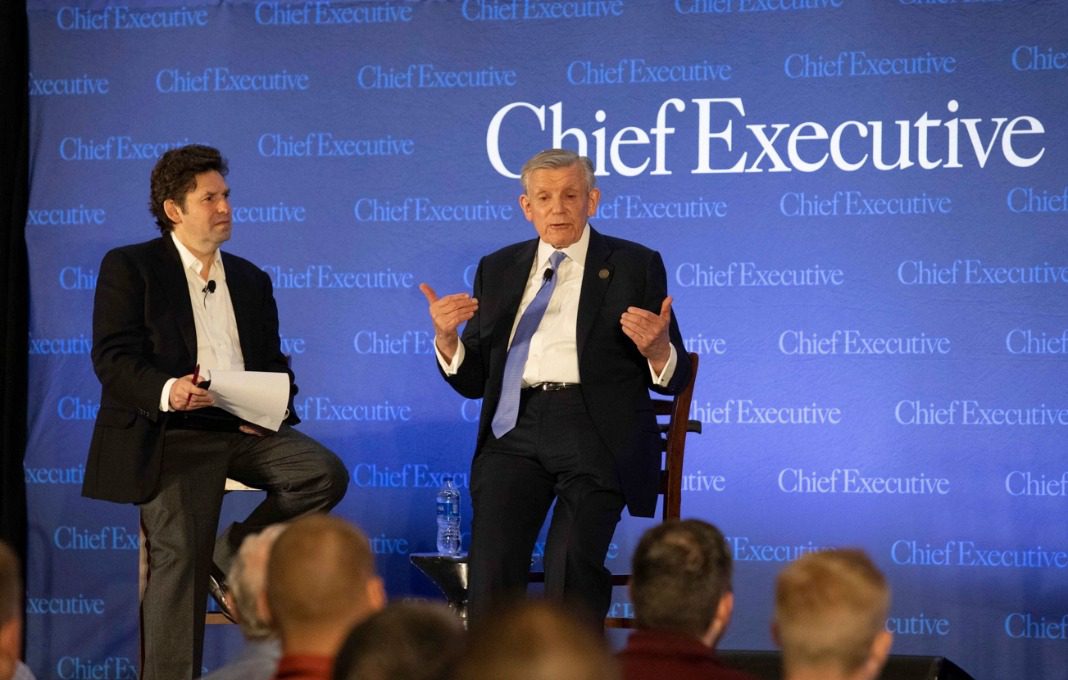Mid-size American manufacturers still nurse concerns about supply chains, inflation and the economy’s loss of momentum, but the ongoing paucity of labor for U.S. factories remains their biggest pain point.
That was an easy conclusion from the discussions at the annual Chief Executive Smart Manufacturing Summit this week. About 150 CEOs and other company leaders gathered in Louisville for two days to get advice and inspiration from superstar CEOs, manufacturing executives and others. And they toured the area factories of stellar manufacturing performers SnapOn Tools, GE Appliances and Louisville Slugger.
The themes of the importance of American manufacturing — and today’s rare opportunity for U.S. factories to regain share of the economy — joined the focused discussion of how to recruit, retain, develop and reward employees in a job market that remains extraordinarily tight despite an ongoing economic slowdown.
“America is still the greatest country in the world [but] there is no path to ongoing prosperity for America without growth in manufacturing,” said keynoter Nick Pinchuk, CEO of SnapOn Tools. “There are some barriers to this. The first barrier is that we need more skilled people. We need them in the jobs of tomorrow [but] we also need people to do things today.”
Manufacturing chiefs therefore should “see your people as the center” of the enterprise, Pinchuk urged. “Then enable them with training and technology and upskilling. Don’t bring in robots to replace people but enable their capabilities to be used to greater effect. More robots, but more people. “
Ken Engel, senior vice president of global supply chain for Schneider Electric, said that “it took a while after Covid” for the U.S. arm of the Paris-based electrical-equipment manufacturing giant “to figure out it’s far more important to focus on retaining people you have through engagement” than continually trying to bring new employees into the enterprise.
“If they’re happy with the job they’re doing,” Engel said, “they’re probably going to stay. It’s about pay, sure — we have done a lot of unique things about pay and bonuses and paying for performance. But it’s about engagement. How do you orient new workers? How do you train them? [We’ve] gotten very specific about how to retain people and improve engagement.”
More Americans are participating in the labor force than at any time since the beginning of the pandemic, Chad Moutray, chief economist for the National Association of Manufacturers, told the summit. But America “remains in a bit of a vicious cycle: There are 10 million job openings and six million unemployed Americans, a [type of] situation that never existed before 2018. And the gap will get wider.
“This is a structural problem that isn’t going to go away,” Moutray said. Manufacturers are “all chasing the same workers [and] competing with a lot of non-traditional players such as Walmart, Amazon” and other retail and service companies that continue to bump up compensation to levels once primarily provided by manufacturing jobs.
One solution to this quandary that’s being pursued by GE Appliances is to “work on the brand [of] our employee value proposition,” said Bill Good, the company’s vice president of supply chain. Employees “all think, ‘What am I getting paid, what are you asking me to do, what environment am I in, what’s the culture like, how much freedom do I have?’ So if you’re not working every piece of that equation, you don’t have a chance” with today’s labor force.
“It’s not enough for [them] to just chase the money. They want to do something different. And as manufacturers, we can make ‘the new American dream’ a reality.” For GE Appliances, that has included deliberate efforts to open its recruitment funnel to “underindexed” groups among its workforce, including women, single parents, student, retirees and political refugees.
Bryan Albrecht, president emeritus of Gateway Technical College in Wisconsin, urged manufacturing chiefs to forge strong relationships with their local academic institutions so schools will help develop the workforces needed by area factories, even beginning as early as exposing elementary-school students to local manufacturers.
And he told them that effective recruitment may well begin in the home. “Inspire hope; put dignity in all work; and [even] ask your own kids about going into manufacturing. And think about all of your employees’ kids as a potential talent pool. Why not talk about their kids and invest in their kids? And if you tell someone you want to invest in their grandkids, that will change their attitudes.”
Serial manufacturing entrepreneur Annette Finsterbusch urged attendees to encourage “intrapreneurism” within their companies to improve worker engagement. “Inside the organization, see how entrepreneurially they can think. Maybe someone is an administrator, and they don’t develop products. But they’re probably dealing with customers and are part of a team that is underpinning the support of customers. How can that person provide a service [innovation] there?
“All the way up to the finance people, who’ve got one job,” said Finsterbusch, who most recently was CEO of EnPower. “Entrepreneurs have to know something about accounting, and all accountants should know something about entrepreneurism.” For instance, when faced with apparent financial constraints, “Get them to think outside of the traditional budget, and how to spend it, and that it’s all allocated and so they can’t think any more because it’s a year until we budget again. ‘Let’s move capital around.’”
Pinchuk and others noted that manufacturing chiefs must do a better job of marketing their business — manufacturing per se — to young American workers.
“Tell them manufacturing is how to create value for themselves and for others that’s greater than they can do individually,” Pinchuk said. “You have to convince them of this [and] that what people do [in manufacturing] every day makes a difference.”








